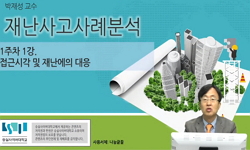직장 내 괴롭힘은 그 정의가 모호하다는 문제와 축적된 선례가 부족한 상태에서 우려와 기대를 함께 받으며 2019년 입법되었다. 우리나라의 직장 내 괴롭힘 금지 제도는 그 정의와 사업장의 ...
http://chineseinput.net/에서 pinyin(병음)방식으로 중국어를 변환할 수 있습니다.
변환된 중국어를 복사하여 사용하시면 됩니다.
- 中文 을 입력하시려면 zhongwen을 입력하시고 space를누르시면됩니다.
- 北京 을 입력하시려면 beijing을 입력하시고 space를 누르시면 됩니다.

직장 내 괴롭힘 판단기준에 대한 연구 ― 입법 이후 판례 분석을 중심으로 ― = Study on Legal Aspects of Assessing Workplace Harassment — With a Focus on Post-Legislation Judgment Analysis —
한글로보기부가정보
국문 초록 (Abstract)
직장 내 괴롭힘은 그 정의가 모호하다는 문제와 축적된 선례가 부족한 상태에서 우려와 기대를 함께 받으며 2019년 입법되었다. 우리나라의 직장 내 괴롭힘 금지 제도는 그 정의와 사업장의 대처를 중심으로 규정되어 있고, 괴롭힘 예방과 대응을 사업장 내에서 우선 처리하도록 하고 있다. 이는 사업장 특성을 반영해 적합한 대처를 할 수 있다는 장점이 있지만, 한편으로 현장에서 판단할 기준과 예시가 부족하여 혼란을 겪어야 했다.
제도 도입 만 3년이 지난 현재, 사업장 내에서 발생한 많은 직장 내 괴롭힘 사건 중 일부는 법정까지 오게 되었고 판결들로 남게 되었다. 아직 직장 내 괴롭힘은 성희롱과 같이 확립된 판례 법리가 없기 때문에 직장 내 괴롭힘이 어떻게 해석되고 판단되고 있는지, 괴롭힘으로 인정된 행위 양태와 판단기준을 이해하기 위해서는 하급심 판결을 분석하여 판단의 경향과 해석 기준을 파악할 필요가 있다. 이에 본 연구에서는 2019년 직장 내 괴롭힘 제도 입법 이후 2023년 말까지, 직장 내 괴롭힘 행위에 대한 판단이 포함된 판결문을 분석 대상으로 삼았다. 이를 통해 직장 내 괴롭힘 인정・불인정의 해석 근거로 제시된 법리들을 정리하였으며, 법적 정의에 따른 기본 판단 요소를 중심으로 구체적인 해석례를 유형별로 분석하였다.
해석 관련 법리들을 살펴본 결과, 직장 내 괴롭힘 해석에 대한 통일된 기준은 아직 만들어지지 않았으나, 몇 가지 의미 있는 진전을 확인할 수 있었다. 직장 내 괴롭힘 행위가 손해배상 책임을 지는 불법행위에 해당함을 확인한 대법원 판례가 존재하고, 직장 내 괴롭힘 행위자와 사용자의 손해배상에서의 법적 책임 관계가 정리되어 있음을 알 수 있었다. 또한 여러 하급심 판결에서 직장에서의 우위성 판단 및 업무상 적정범위를 넘는 행위의 유형과 해석 기준을 개별 사건에서 구체적으로 제시하고 있었다. 이러한 해석례를 종합하면 법원에서의 괴롭힘 인정과 판단의 범위를 유의미하게 획정할 수 있다.
끝으로 직장 내 괴롭힘을 판단하는 요소를 4가지로 구분하여 사례를 분석하였다. 검토 결과 직장 내 괴롭힘 정의에 포함된 ‘직장에서의 우위 이용’, ‘업무상 적정범위를 넘는 행위’에 대한 해석은 활발하게 이루어지며, 괴롭힘 성립 여부를 판단하는 데 가장 주요하게 사용되고 있었다. 다만 ‘정신적, 신체적 고통 또는 근무환경 악화’라는 피해 발생과 ‘종합 판단 요소’는 중요하게 검토되지 않고 있음을 알 수 있었다. 이는 직장 내 괴롭힘의 정의 자체에 이러한 요소들을 포함하고 있기 때문이며, 직장 내 성희롱 관련 법리와 판단기준을 그대로 사용할 수는 없음을 이해할 수 있는 지점이다. 이 점을 참고하여 더욱 구체적인 사례 분석 및 직장 내 괴롭힘의 특수성을 충분히 반영한 독자적인 해석 방식과 판단기준 정립이 필요할 것이다.
다국어 초록 (Multilingual Abstract)
Workplace harassment regulation was legislated in 2019 amidst both concerns and expectations, due to its ambiguous definition and lack of precedents. Currently, three years after the introduction of the legislation, several cases of workplace harassme...
Workplace harassment regulation was legislated in 2019 amidst both concerns and expectations, due to its ambiguous definition and lack of precedents. Currently, three years after the introduction of the legislation, several cases of workplace harassment have been brought to court, resulting in judicial decisions. Because workplace harassment issues lack established precedents, there needs to be an analysis of lower court rulings to understand how workplace harassment is interpreted and judged and what behavioral patterns and criteria the court recognizes.
This study focuses on analyzing court judgments involving workplace harassment behaviors from the enactment of the legislation in 2019 until the end of 2023. It aims to consolidate the legal reasoning presented as the basis for recognizing or denying workplace harassment and to categorize cases based on common judgment criteria.
Upon examining the legal principles, although unified standards for interpreting workplace harassment have not yet been established, some meaningful progress has been observed. Supreme Court precedents have confirmed workplace harassment as constituting unlawful behavior subject to damages claims, and the relationship between liability for damages of perpetrators and employers have been clarified. Lower court rulings have provided specific interpretations and criteria for determining types of behaviors exceeding the scope of legitimate workplace conduct based on the factual circumstances of individual cases. Consolidating these individual and specific interpretations allows for a meaningful delineation of the scope of recognition and judgment of harassment by the courts.
Lastly, this study analyzes cases based on four elements used to judge workplace harassment. The review reveals that interpretations regarding 'utilization of superiority in the workplace' and 'acts exceeding the scope of legitimate work duties' are actively applied, serving as key determinants for assessing harassment. However, factors such as 'mental or physical suffering or deterioration of the working environment' and 'comprehensive judgment criteria' are not significantly emphasized. This is because these elements are included in the definition of workplace harrassment itself and this highlights why criteria from sexual harassment cases cannot be directly utilized in workplace harassment cases. Considering this, a unique criteria for workplace harassment needs to be developed based on specific case analysis and with consideration for uniqueness of workplace harassment.
동일학술지(권/호) 다른 논문
-
- 서울대학교노동법연구회
- 강성태
- 2024
- KCI등재
-
- 서울대학교노동법연구회
- 이율경
- 2024
- KCI등재
-
노동 영역에서 알고리즘 혹은 인공지능에 대한 스페인의 규율 및 검토
- 서울대학교노동법연구회
- 노호창
- 2024
- KCI등재
-
ILO 산업안전보건관련 협약과 우리나라의 산업안전보건법
- 서울대학교노동법연구회
- 박은정
- 2024
- KCI등재




 DBpia
DBpia







